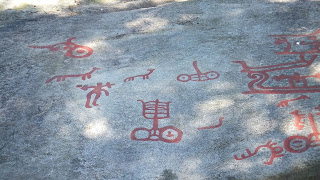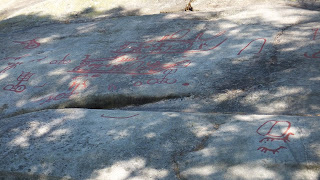Nationaltheateret
 |
| The National Theater's main entrance, to the east. The statues of Henrik Ibsen to the left, and Bjørnstjerne Bjørnson to the right. |
The National Theater in Oslo is one of the most well-known
landmarks in the city. It is also one of Norway’s largest and most prominent
venues for performance of dramatic arts. However, when the champions of theater first applied for this plot in 1880, the university claimed that a theater did
not belong together with the parliament, the university and the king’s castle. But
then Henrik Ibsen (1828-1906) and Bjørnstjerne Bjørnson (1832-1910), the two famous play writers of the
time, gained international prestige, and then started fighting for the theater;
the university lost its case.
The theatre is situated in Studenterlunden. To the
north you find Karl Johans gate, Stortingsgata to the south, Universitetsgata
to the east and Johanne Dybwas Plass to the west.
Henrik Bull won the architectural competition I 1891,
and the theater opened on the 1st of September 1899. Now the
building is dire need of repairs, but it seems like the politicians don’t want
to make their minds up, due to the costs. They have so far estimated the
repairs to over $ 200 000 (US).
 |
| North side of the theater. |
The theater has three stages. The main stage,
Hovedscenen, in new rococo style, was originally built with 1268 seats. This
was reduced to 741 seats, when the theater was remodeled and a new stage,
Amfiscenen, was built and opened in 1963. This is on the theater’s fourth
floor, and has just above 200 seats. This stage has been rebuilt several times,
last in 1999. The newest and smallest stage, Malerscenen, has 60 seats. It was
named, as the name indicates, from the original room where it was built, the
painter’s room, where they used to paint the scenery.
The first director of the theater, was Bjørn Bjørnson,
son of Bjørnstjerne Bjørnson. Today the theater has its second female director,
Hanne Tømta, number 22 in line.
The theater is often considered the home for
Ibsen's plays, and most of his works have been performed here.
 |
| Ludwig Holber, 1684-1754, 18th century Norwegian play writer. |
 |
| Wenche Foss, 1917-2011 - Norwegian theater diva. |
 |
| The National Theater seen from Johanne Dybwads plass. |






































